From its inception as a microcosm for all things Japanese counterculture in the 1990s to its present-day status as one of the most acclaimed brands in both high-fashion and streetwear alike, Undercover has never compromised on its artistic vision. With a keen eye for detail and an aversion to seasonal trends, Undercover has made a name for itself by following the guidance of its founder, the auteur Jun Takahashi. With three decades’ worth of carefully cultivated collections, collaborative projects, and genre-defying runway shows, the brand’s founder Takahashi has been at the helm since day one.
Initially, Undercover was just one of the young auteur’s creative outlets. Before formally establishing himself as a “brand,” Takahashi would make silk-screened collage-style t-shirt graphics inspired by the gig posters of Tokyo’s DIY punk scene. The 20-something-year-old rebel was entrenched in this scene as he was the frontman for an aptly named Sex Pistols cover band called “The Tokyo Sex Pistols” while studying at Tokyo’s renowned Bunka Fashion College. Non-mainstream and overall “left-field” music scenes would continue to define much of the designer’s oeuvre for years to come. Much like renowned Belgian designer Raf Simons, Takahashi is no stranger to embracing the aesthetics of his favorite bands, sometimes directly lifting album artwork to use as patches or patterns on garments composed of luxury materials.
Undercover proper was born from a marriage of the formalism acquired in his Bunka College education and the raucous influence of his countercultural ventures. Although Takahashi founded the brand in 1990 while still in school, it wasn’t until 1993 when the brand would finally begin to take off in earnest. This is because this was the year that Takahashi and his schoolmate Tomoaki Nagao (better known as Nigo, founder of A Bathing Ape) would open the legendary brick-and-mortar, Harajuku-based retailer, NOWHERE. A mainstay of Ura-Harajuku (colloquial term for Harajuku’s interconnected backstreets), NOWHERE was where Undercover and eventually BAPE would cut their teeth.
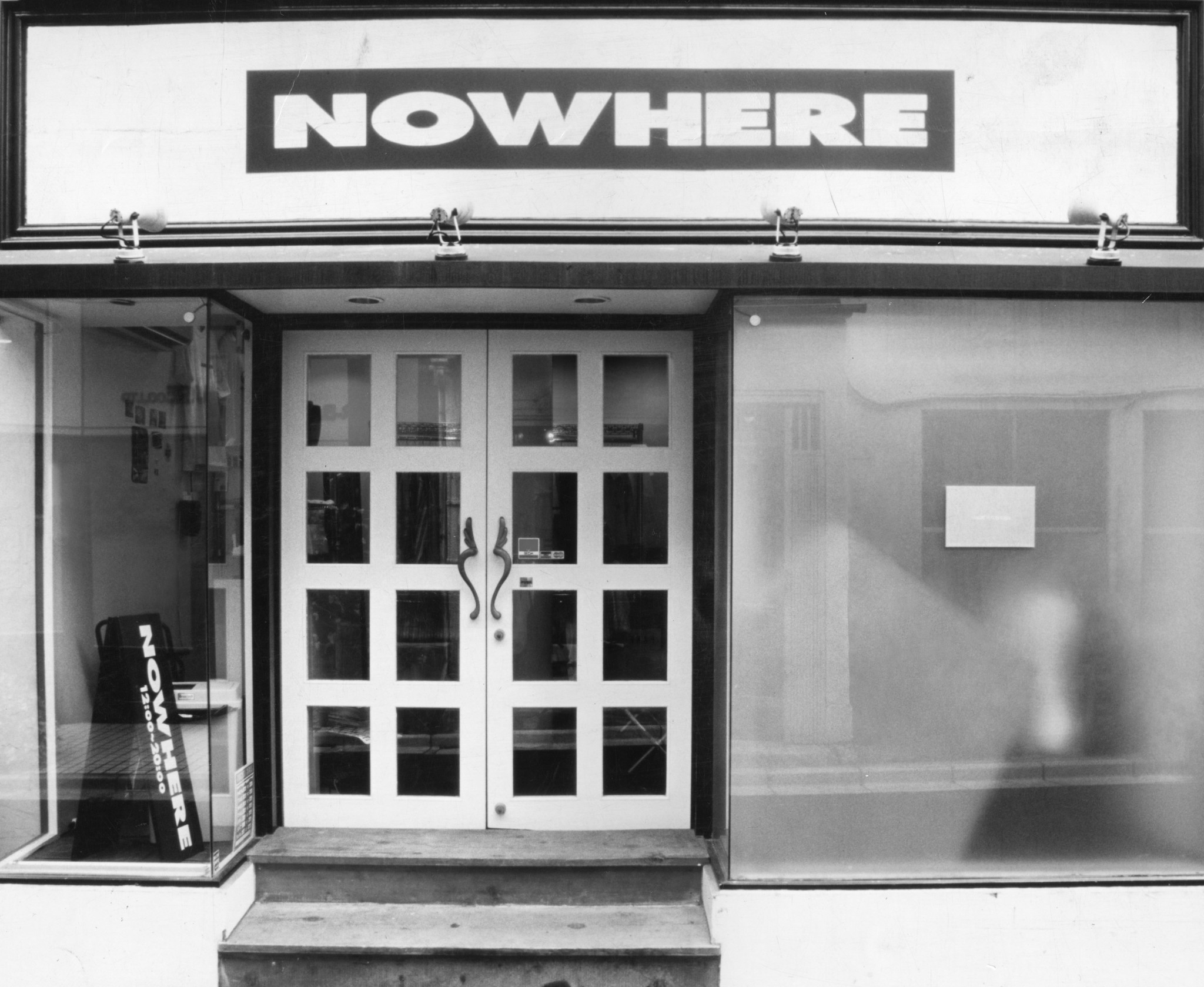 Image via Rizzoli
Image via Rizzoli
Half of the shop was stocked with Undercover, while the other featured sneakers and US-imported apparel curated by Nigo before launching BAPE in-store a few short months later. The NOWHERE name would only grow more prominent in the coming months with the 1994 founding of AFFA (Anarchy Forever Forever Anarchy) with fellow streetwear titan Hiroshi Fujiwara. Fujiwara had already established a name for himself with, “Last Orgy,” an editorial series in the popular Japanese magazine Takarajima where the future Fragment founder would tout and create trends in fashion and general street culture at large in his native country. Fujiwara helped legitimize much of what would be considered “cool” in Japanese youth culture. A true proto-influencer if there ever was one.
NOWHERE was frequently co-signed by the future Fragment founder; his endorsement gives the shop and its founder’s respective brands a considerable and well-deserved push in popularity amongst the fashion-savvy Ura-Harajuku clientele and broader Japanese youth in general. NOWHERE was a runaway success, with both BAPE and Undercover brands selling out time and time again, much to the initial surprise of the Bunka schoolmates.
Seeing photos of the baby-faced trio in old promotional images is surreal, as each would go on to find great successes as their brands would carve a place for themselves within the mainstream fashion landscape. The trio’s respective output during this time would informally define what the modern-day streetwear “drop” as we know it today looks like, with its fan’s fervent demand, low stock, and limited retailers. NOWHERE would maintain its cultural staying power until its eventual closure in 2000 as Undercover and BAPE consumed more and more of their founder’s time.
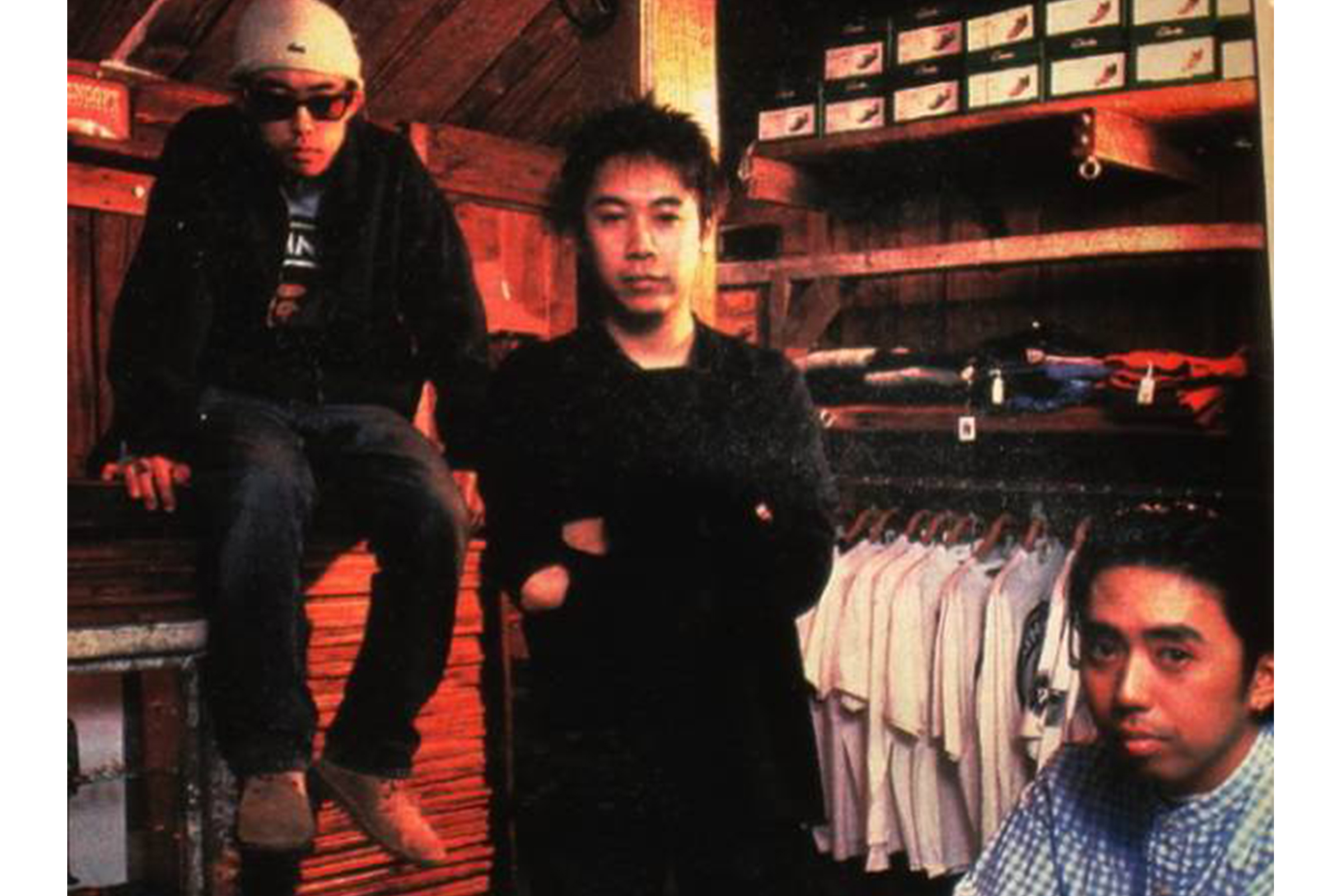 Image via Rizzoli
Image via Rizzoli
While Nigo’s BAPE and Fujiwara’s fragment design would go on to make great strides in sculpting modern streetwear and sneaker culture in both Asia and North America, Undercover would take a more refined detour before re-embracing its founder’s streetwear roots in the late-2000s.
Like many of Japan’s best designers, Undercover’s eventual international success can be attributed to its connection with Comme des Garçons. The story goes that Takahashi caught the bug for fashion design after attending a CDG runway show in the 80s. In 1994, CDG founder Rei Kawakubo herself would come out as an early proponent of the brand after attending the brand’s first women’s runway show in ‘94 and buying a customized MA-1 bomber jacket from the inaugural collection. Impressed by his work, Kawakubo personally encouraged the young designer to show internationally. With the blessing of his hero in tow, Takahashi would work tirelessly to expand his rag-tag, DIY streetwear brand into a bonafide fashion house by the time it debuted internationally in Paris with his ‘03 Spring/Summer collection, “SCAB.”
The event was promoted with an unnerving show invite displaying nothing but a photograph of a woman’s injured, scabbed legs and minimal text. The show itself focused on deconstructed garments with unconventional tailoring, patterns, and fabric choice that aimed to emulate the look of DIY, “crust punk” aesthetics. Rather than pivot his work to what the Parisian bourgeoisie might expect from a Fashion Week debut, Takahashi instead sculpted beauty out of the traditionally “ugly.” While atypical to other designers’ work, SCAB couldn’t have been any more faithful to his label’s ethos. Leaning into his punk roots, SCAB used its unconventional garments as a catalyst for leftist commentary. Archive PDF described the event as follows:
“In 2002, Undercover got its big break onto the international scene in the form of a Paris Fashion Week show slot. In the wake of 9/11 and the subsequent invasion of Afghanistan, along with the buildup to the Iraq war, Jun Takahashi stayed true to his punk ethos and decided to spit in the face of warmongering. With this opportunity of Paris Fashion Week presented to him, Jun Takahashi dared to be bold with the presentation of SS2003 SCAB, which was chock full of staunchly anti-war, anti-imperialist, and anti-capitalist messages.”
Since then, Undercover shows have maintained their high standard of quality and originality. Each season’s work builds on esoteric themes like greek mythology, B-Movie horror, German folklore, Stanley Kubrick films, and anime. As 032c points out, “… the music of Joy Division and Einstürzende Neubauten, and the films of Jan Švankmajer and Stanley Kubrick, are enduring sources of inspiration for Takahashi.” These are all artists whose work is mostly focused on the darker, mature themes and attempts to sculpt the beauty of these more melancholy themes, a tradition that Takhashi himself is keen on continuing.
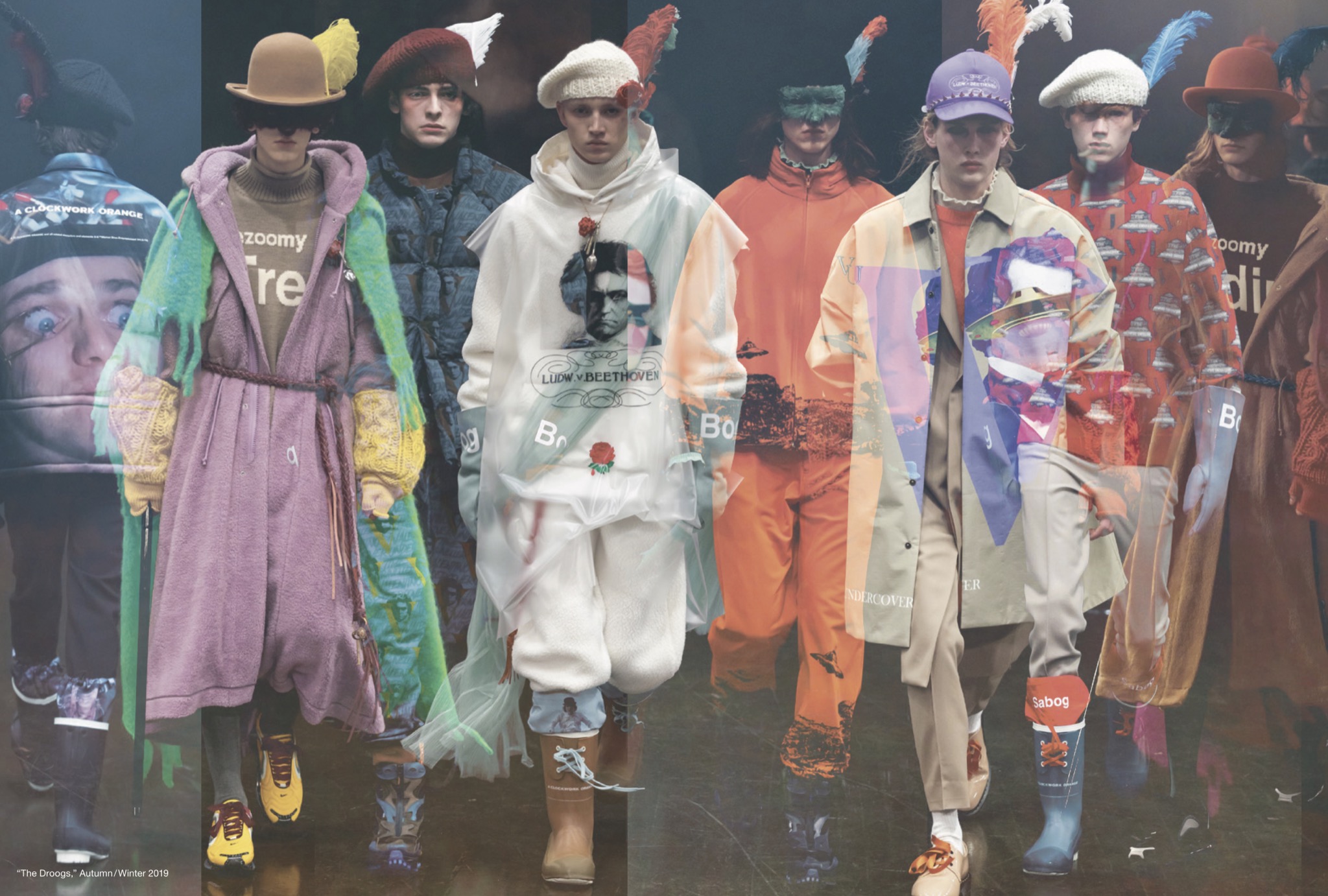 Image via 032c
Image via 032c
Each collection garners attention not only for the evocative nature of its garments but the larger-than-life presentation of the events too. Their most recent collection, S/S22’s “CREEP VERY,” featured a haunting remix by Thom Yorke of Radiohead’s Creep paired with clothes that all paying homage to the psychological/mecha anime Neon Genesis Evangelion. Picking an anime from the 90s as your muse may seem like a strange move, but the show’s darker themes and the unsettling runway score make for the perfect backdrop for Takahashi’s latest gothic venture.
Now, with all this talk of doom and gloom, it may seem like Undercover’s darker, avant-garde tendencies would make them impenetrable to the mainstream, but that couldn’t be further from the truth. Since the brand’s Parisian debut, the brand has done an excellent job of integrating itself in the public consciousness with an onslaught of high-profile collaborations and extensive diffusion lines: Uniqlo, Supreme, Nike, even Hello Kitty(!). Takahashi knows how to dial back the edge and present his keen eye for beautiful design in an effective palatable manner in these projects. All of which is provided at a much more affordable price point than mainline Undercover.
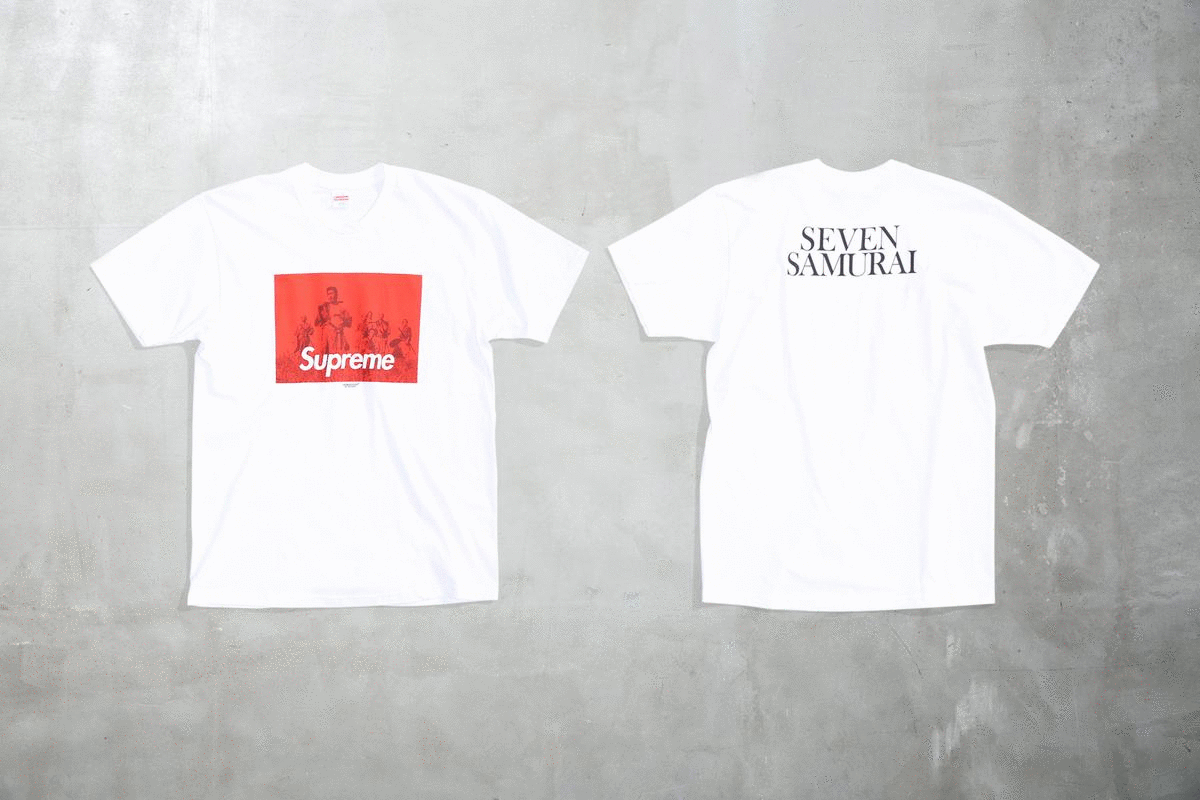 Images via Supreme
Images via Supreme
The most successful and longest-running of these collaborations have to be their work with Nike, particularly their Gyakusuo line of running shoes and apparel. Launched in 2010, Takahashi was initially signed on to design three seasons worth of his elevated running line. The partnership has instead continued for over a decade, with collections launching as recently as this season. For folks like SoleSavy member Josh A., the Nike partnership was the entry point into a long-standing adoration for the brand. Josh tells us:
“I always knew about Undercover, but it wasn’t until they started releasing Gyakusou with Nike that I started looking deeper into Undercover and Jun Takahashi. The unique take they had on running gear had me very interested in the brand, and I’ve been hooked to Undercover ever since. Mainline Undercover is all about a unique take on punk and Japanese street style, whereas the Nike collabs put an athletic/sporty twist to it, which I also think is cool.”
Their latest mainline Nike collection, “UBA” (Undercover Basketball Association), was inspired by this year’s Tokyo Olympics. The collection reinterprets standard basketball apparel as uniforms for an alternate-reality NBA. Of particular note is the UBA 1985 Dunk High, which promptly sold out upon its release on July 28th, 2021. With this take on the hottest retro sneaker of the moment, Undercover continues to prove itself a jack of all trades, appealing to the avant-garde enthusiast, athlete, and sneakerhead alike, a skill they’ve honed over the years.
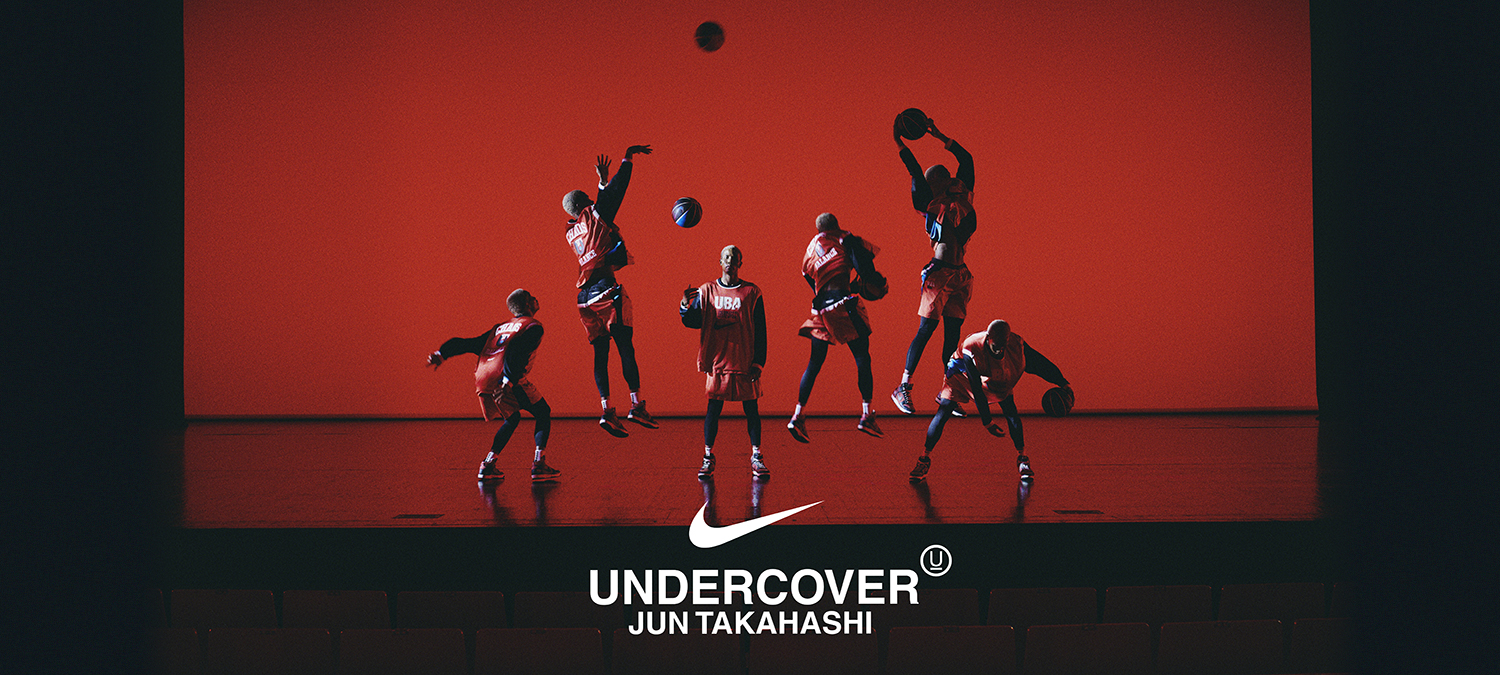 Image via Nike / Undercover
Image via Nike / Undercover
Nike will often debut new sneaker silhouettes with a collaborative colorway first or shortly after their launch as a way to further demand for the model. Take, for instance, the gorgeous – if tragically short-lived – React Element 87. Released in September of 2018, two months after the silhouette’s debut, the Undercover x Nike React Element 87, particularly its versatile “Green Moss” colorway, furthered increased demand for Nike’s hottest runner of the time.
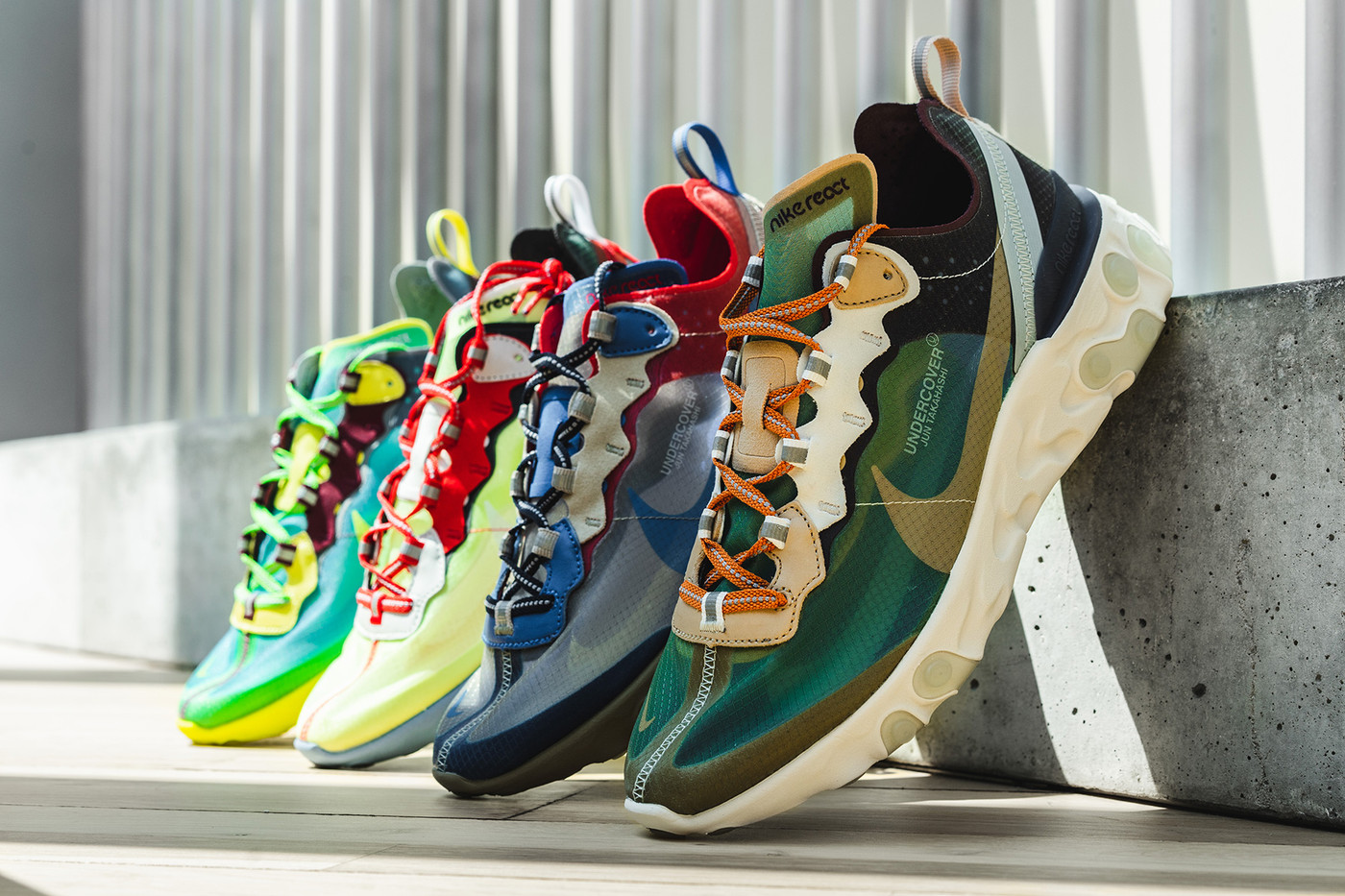 Image via Hypebeast
Image via Hypebeast
Other recent Nike silhouettes they’ve tackled include the SFB Boot, Presto React, and Daybreak. For SoleSavy member Adrian B., it was the Daybreak collab that helped ignite their love for Takahashi’s work:
“My first real experience and exposure to Undercover was in 2019 when I visited Japan and happened to stumble upon the Madstore in Harajuku. I knew what Undercover was, but the vibe of the shop really pulled me in. I got my first real dose of the brand shortly after I bought the Undercover x Nike Daybreaks, which are my favorite collab and only Undercover piece.
I’ve always liked the “edginess” of their collabs. Undercover’s slogan of “We Make Noise, Not Clothes” is always present. Whether it be the silhouette, colors, or the outlandish addons – Jun Takahashi’s pieces are always loud and unique, which I love. Gyakusou is cool too and I love the A/W03 “Paperdoll” and F/W20 “Fallen Man” collections.”
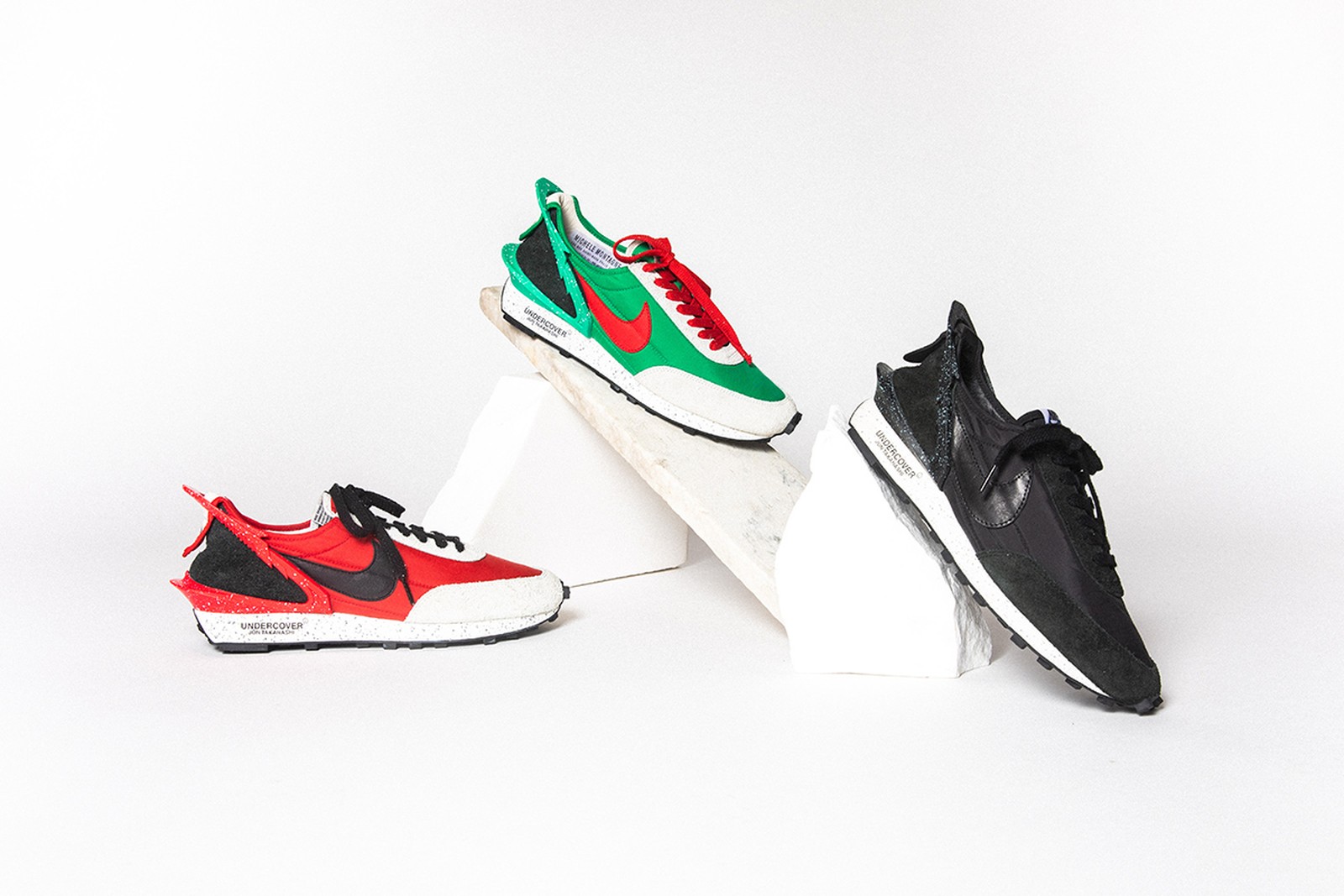 Image via Highsnobeity
Image via Highsnobeity
With their rebellious spirit distilled into hyper-stylized, bite-sized portions, these partnerships have helped expose Undercover to a new subset of the population. In 2021, Undercover has managed to make a name for itself in the cultural zeitgeist as one of Japan’s most respected fashion houses and simultaneously returned to its streetwear roots. Undercover and thus Takahashi is more mainstream now than ever. Regarding this mass appeal, Takahashi told 032c in an interview: “After you put the clothes out there, they are out of your control. I can only control the worldview that I present, and if I can leave an impression on you, make you feel or think – whether good or bad – then I did my job.”
Undercover is Takahashi’s brainchild, and the fact it has stuck with the public is because of its creator’s unwavering vision. While Undercover’s work could not be executed without its versatile team in tow, Takahashi remains the singular force behind the design of each collection’s pieces. There’s a reason the brand’s logo is printed with his name prominently underneath.
Undercover is Jun Takahashi, Jun Takahashi is Undercover, and their future success is all but guaranteed as long as that remains true.
 Image via Undercover
Image via Undercover

